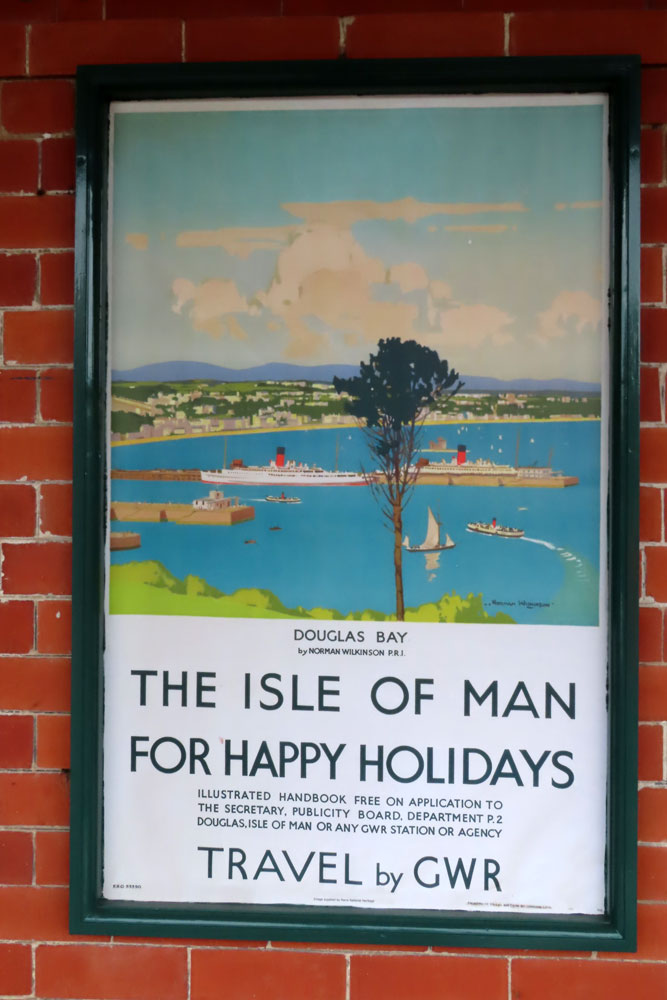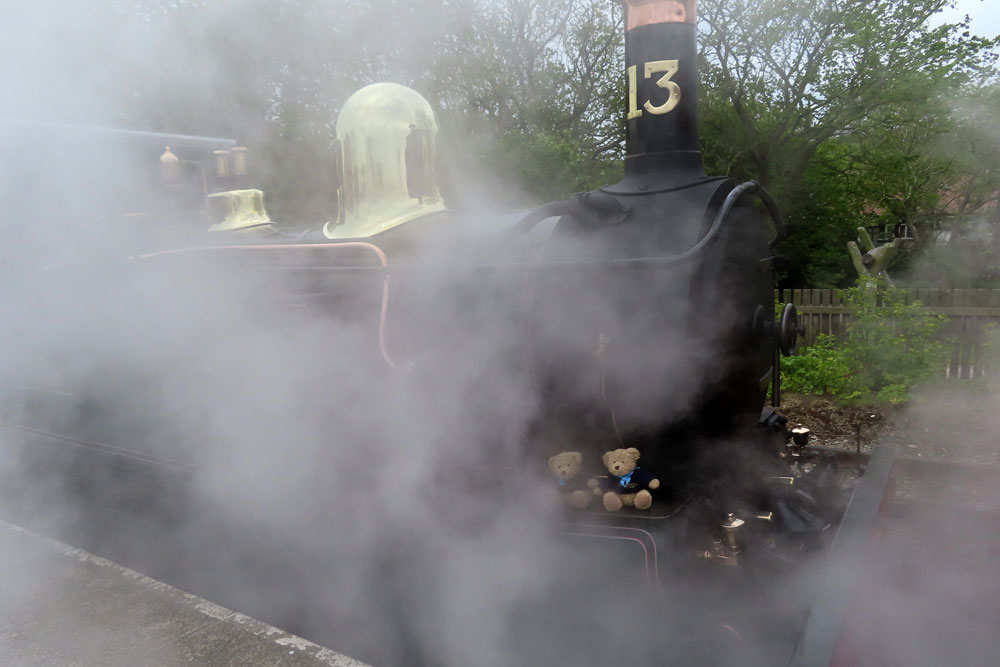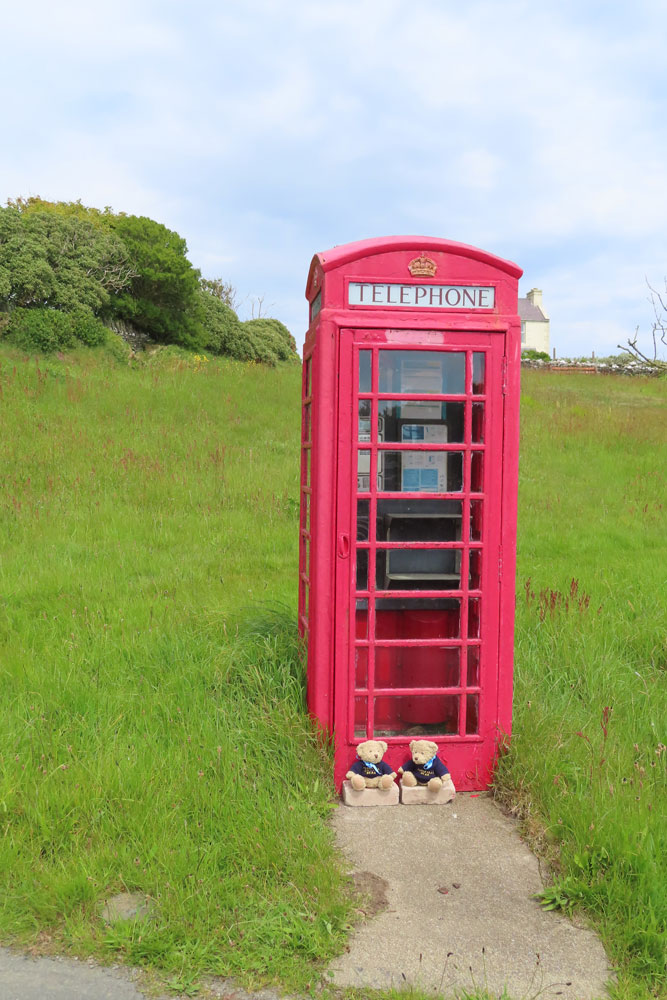 |
 |
 |
 |
The population is 83,000 of whom about 50% are native born, and the other 50% mainly from the rest of the UK. It is 32 miles long and 14 miles wide
The island was cut off from the surrounding islands around 8000 BC as sea levels rose following the end of the ice age. Humans colonised it by travelling by sea some time before 6500 BC. The first occupants were hunter-gatherers and fishermen. Examples of their tools are kept at the Manx Museum.
The Isle of Man has designated more than 250 historic sites as registered buildings.
Towns
Villages
Other destinations
Castle Rushen & Vintage Steam Train
Tour taken on our first visit on the Halifax to Southampton leg
 |
 |
"Leaving the harbour at Port St Mary, take a short transfer to the town's railway station. Built in 1892, the Victorian red brick two-story railway station at Port St Mary is on the Isle of Man's list of Registered Buildings and Conservation Areas. Registered status prevents any extension, alteration, demolition or anything that could affect the building's historic character.
Board a vintage steam train to journey across the southern part of the island and enjoy wonderful views of spectacular scenery. The Isle of Man Steam Railway, which is part of the island's public transport system, operates with much of the original rolling stock, and passengers travel in carriages pulled by engines that are over 100 years old. Arriving at Castletown Railway Station, another of the Isle of Man's Registered Buildings, alight and take a short transfer (or walk) to the Castle Rushen.
Castle Rushen dominates the southern lowlands and its formidable, robust walls can be seen from afar. The castle is believed to have been built around 1200 and was the residence of the last Norse King of Man, who died in 1266. Part of the castle was destroyed in an attack lead by Robert the Bruce in 1313 and was rebuilt around 1344. In the clock room, formerly used as the castle chapel, is a clock that was presented by Queen Elizabeth I in 1597, while she held the island pending a dispute. The clock is of simple construction with only one hand but keeps very good 'Manx' time.
Before returning to Port St Mary, enjoy a little time to look around Castletown. Until 1865 Castletown was the island's capital and with its origins dating back to 1090, is one of the oldest towns in the British Isles. Explore the narrow streets, the picturesque harbour and the historical buildings that make Castletown so charming and unique".
The Boyzz enjoyed the train, although the scenery it steamed through was unremarkable. They were disappointed that there was not a bun shop open in Castletown.
Click on any thumbnail photo and get a larger photo
 |
 |
 |
 |
 |
 |
 |
 |
 |
 |
 |
 |
 |
 |
 |
 |
 |
 |
 |
 |
 |
 |
 |
 |
 |
Cregneash & The Sound
Tour taken on our second visit on the Southampton to Tromso leg
This was the tour that we did on the return leg with the ship. Interesting but nothng special . Our short hike opposite the Calf of Man was exhilarating
 |
 |
 |
 |
"Explore the southern tip of the Isle of Man with its beautiful rolling green landscapes portioned by dry stone walls and inhabited by Manx Loaghtan sheep. Leaving Port St Mary, take the short journey to the living museum of Cregneash. This small hamlet of thatched, whitewashed cottages gives an authentic ambience of traditional Manx life in the 19th century. Cregneash was one of the last strongholds of the Manx language and traditional way of life. Step inside the original crofter's dwellings to see how traditional crafts and trades were skillfully practiced in days gone by. Manx crofters will show you the old methods of subsistence and give you an insight into life in rural Isle of Man over 100 years ago.
Leaving Cregneash, head further south to the Sound. The Sound is the ¾ km stretch of water between the Isle of Man mainland and the Calf of Man, and this coastal viewpoint is one of the most scenic places in the British Isles. With excellent views of the sound and the Calf of Man Nature reserve, enjoy the sights and sounds of the flourishing Manx ecosystem with its abundance of wildlife and natural wonders. Often seals can be spotted basking on the rocky Kitterland (islet in the Sound) and sometimes dolphins and basking sharks can be seen. Look across to the Calf of Man, a renowned bird sanctuary where many migrating birds stop off for a rest on their journey to or from warmer climates. The visitor centre at the Sound Café provides a wide range of information about the local wildlife and the many wrecks of sunken ships that lie off the shore. After a Manx experience of history, wildlife, breath-taking scenery and wonderful fresh air, return to Port St Mary".
.

Click on any thumbnail photo and get a larger photo
 |
 |
 |
 |
 |
 |
 |
 |
 |
 |
On to Isles of Scilly on inward leg
On to Iona on outward leg